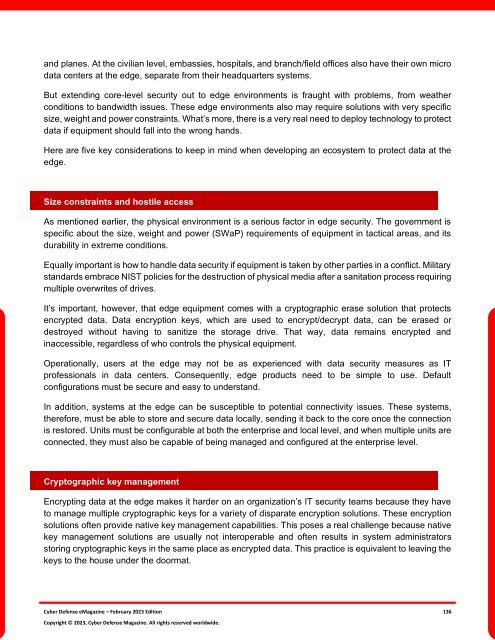Cyber Defense eMagazine February Edition for 2023
Cyber Defense eMagazine February Edition for 2023 #CDM #CYBERDEFENSEMAG @CyberDefenseMag by @Miliefsky a world-renowned cyber security expert and the Publisher of Cyber Defense Magazine as part of the Cyber Defense Media Group as well as Yan Ross, Editor-in-Chief and many more writers, partners and supporters who make this an awesome publication! Thank you all and to our readers! OSINT ROCKS! #CDM #CDMG #OSINT #CYBERSECURITY #INFOSEC #BEST #PRACTICES #TIPS #TECHNIQUES
Cyber Defense eMagazine February Edition for 2023 #CDM #CYBERDEFENSEMAG @CyberDefenseMag by @Miliefsky a world-renowned cyber security expert and the Publisher of Cyber Defense Magazine as part of the Cyber Defense Media Group as well as Yan Ross, Editor-in-Chief and many more writers, partners and supporters who make this an awesome publication! Thank you all and to our readers! OSINT ROCKS! #CDM #CDMG #OSINT #CYBERSECURITY #INFOSEC #BEST #PRACTICES #TIPS #TECHNIQUES
You also want an ePaper? Increase the reach of your titles
YUMPU automatically turns print PDFs into web optimized ePapers that Google loves.
and planes. At the civilian level, embassies, hospitals, and branch/field offices also have their own micro<br />
data centers at the edge, separate from their headquarters systems.<br />
But extending core-level security out to edge environments is fraught with problems, from weather<br />
conditions to bandwidth issues. These edge environments also may require solutions with very specific<br />
size, weight and power constraints. What’s more, there is a very real need to deploy technology to protect<br />
data if equipment should fall into the wrong hands.<br />
Here are five key considerations to keep in mind when developing an ecosystem to protect data at the<br />
edge.<br />
Size constraints and hostile access<br />
As mentioned earlier, the physical environment is a serious factor in edge security. The government is<br />
specific about the size, weight and power (SWaP) requirements of equipment in tactical areas, and its<br />
durability in extreme conditions.<br />
Equally important is how to handle data security if equipment is taken by other parties in a conflict. Military<br />
standards embrace NIST policies <strong>for</strong> the destruction of physical media after a sanitation process requiring<br />
multiple overwrites of drives.<br />
It’s important, however, that edge equipment comes with a cryptographic erase solution that protects<br />
encrypted data. Data encryption keys, which are used to encrypt/decrypt data, can be erased or<br />
destroyed without having to sanitize the storage drive. That way, data remains encrypted and<br />
inaccessible, regardless of who controls the physical equipment.<br />
Operationally, users at the edge may not be as experienced with data security measures as IT<br />
professionals in data centers. Consequently, edge products need to be simple to use. Default<br />
configurations must be secure and easy to understand.<br />
In addition, systems at the edge can be susceptible to potential connectivity issues. These systems,<br />
there<strong>for</strong>e, must be able to store and secure data locally, sending it back to the core once the connection<br />
is restored. Units must be configurable at both the enterprise and local level, and when multiple units are<br />
connected, they must also be capable of being managed and configured at the enterprise level.<br />
Cryptographic key management<br />
Encrypting data at the edge makes it harder on an organization’s IT security teams because they have<br />
to manage multiple cryptographic keys <strong>for</strong> a variety of disparate encryption solutions. These encryption<br />
solutions often provide native key management capabilities. This poses a real challenge because native<br />
key management solutions are usually not interoperable and often results in system administrators<br />
storing cryptographic keys in the same place as encrypted data. This practice is equivalent to leaving the<br />
keys to the house under the doormat.<br />
<strong>Cyber</strong> <strong>Defense</strong> <strong>eMagazine</strong> – <strong>February</strong> <strong>2023</strong> <strong>Edition</strong> 136<br />
Copyright © <strong>2023</strong>, <strong>Cyber</strong> <strong>Defense</strong> Magazine. All rights reserved worldwide.

















